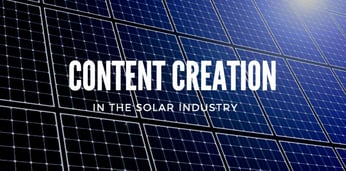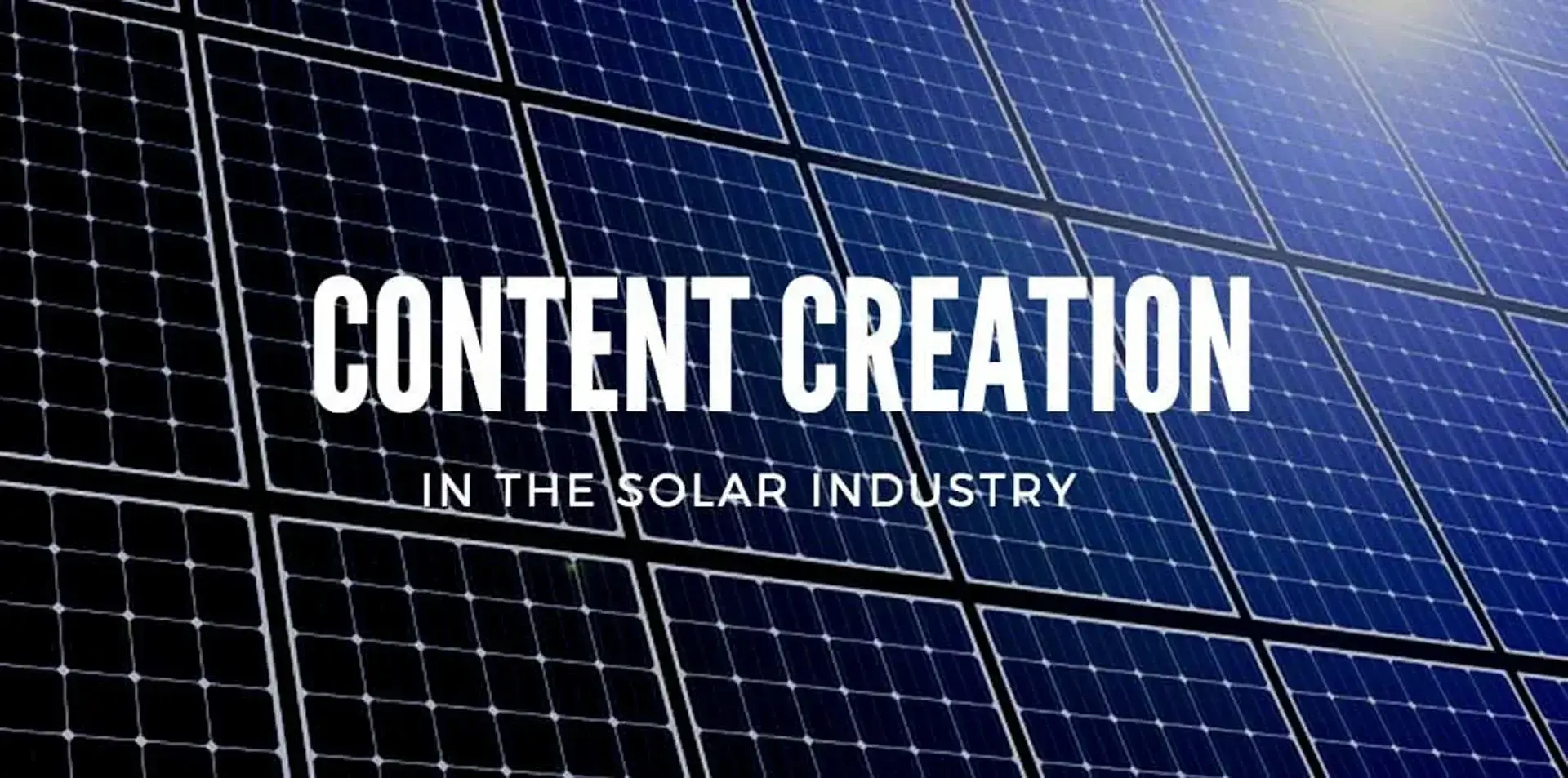Solar firms looking to create an inbound marketing strategy built on compelling content are faced with a classic good news/bad news situation. The good news? There's no shortage of great solar content to choose from. The bad news? Well...there's no shortage of great solar content to choose from. This firehose of content can be overwhelming, and solar firms need to resist the urge to try and leverage it all. It's simply impossible.
 Therefore, the trick to ensuring steady and effective content creation for the solar industry is, not surprisingly, to plan ahead. Set limits. Be realistic. Play to your strengths. Take your blogging strategy, for example. Sure, it's built on content, but you need to ensure that your strategy is practical and achievable. You don't need to post two posts a day five days a week. Instead, simply start by publishing three 500-750 posts a week, say, Monday, Wednesday, and Friday. Make sure the posts include two or three hyperlinked keywords, and pay special attention your blog's "voice." Who are you writing to? What are these readers' major concerns? More often than not, your paramount goal will be educate readers and exude expertise. As a result, follow the 80/20 rule: 80% of your content should be informative; 20% should be sales-oriented.
Therefore, the trick to ensuring steady and effective content creation for the solar industry is, not surprisingly, to plan ahead. Set limits. Be realistic. Play to your strengths. Take your blogging strategy, for example. Sure, it's built on content, but you need to ensure that your strategy is practical and achievable. You don't need to post two posts a day five days a week. Instead, simply start by publishing three 500-750 posts a week, say, Monday, Wednesday, and Friday. Make sure the posts include two or three hyperlinked keywords, and pay special attention your blog's "voice." Who are you writing to? What are these readers' major concerns? More often than not, your paramount goal will be educate readers and exude expertise. As a result, follow the 80/20 rule: 80% of your content should be informative; 20% should be sales-oriented.
With this framework in place, the next key element in implementing consistent content creation for the solar industry is to create an editorial calendar for your blog. Key inputs here include selecting a platform, picking the days you'll publish, identifying topics that resonate with your buyer personas. When an organization has a written plan in place with ownership rules, guidelines, and key roles and responsibilities, they'll be more likely to effectively prioritize and leverage content.
You also want your writers write about things they know about. It sounds obvious, but if Joe in financing is an expert on solar financing (which of course he is) he should only write exclusively on...yup, solar financing. Joe will naturally be more inclined and motivated to write posts on familiar topics. (However, if Joe remains hesitant, you can always partner with a marketing agency that provides blogging and content creation services.)
Next up is establishing a consistent pipeline of content. This is perhaps the easiest part. Existing in-house materials—brochres, white papers, FAQs, videos, etc.—can easily be repurposed for blogging and things like solar landing pages and eBlasts. As for creating new brand new content, set realistic goals: a white paper a month, for example. Also set up a Google Alert so the most pertinent solar content is delivered to your inbox every morning or once a week. You'll have no shortage of interesting articles to choose from. For example, if you had a Google Alert with the keywords "solar panels California," you'd receive an interesting piece in the Washington Post noting that California could power itself three to five times over with solar power. That's powerful stuff!
What do you think? How does your team keep up with the "firehose" of solar content? What other tips did we neglect to mention?
Looking for more tips to optimize your content creation? Contact us for a free consultation.






